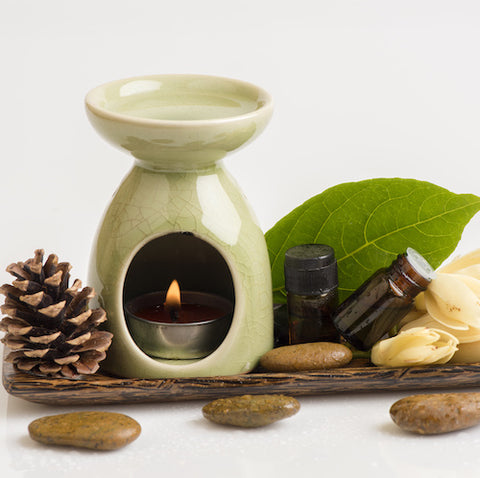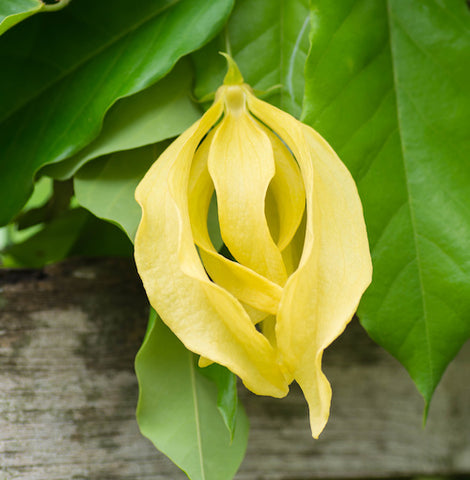Cart is empty
0 Products
FREE DOMESTIC SHIPPING OVER $100. MADE BY NATURE. PERFECTED BY SCIENCE.
FREE DOMESTIC SHIPPING OVER $100.
Cart is empty
0 Products
You can’t deny it, terpenes are having a moment. And for good reason! But let’s talk about one terpene in particular--linalool. What exactly is linalool? Linalool is a terpene with a lavender-like scent known for its calming and soothing properties. But it’s a lot more than that too.
Let us break it down for you…

Linalool - It might be a tongue twister, but this terpene has one of the most identified aromas of all terpenes. Admirers of fine herbs might not even realize that this pleasant odor is already known to them. It’s the signature scent of a number of well-known aromas and cosmetic ranges, and it’s often used in products to help promote a sense of serenity.
At first sniff, linalool has a floral and slightly sweet scent. But it also contains a hint of mint, very reminiscent of lavender and is commonly used all over the world..
Linalool is both monoterpene alcohol and a colorless liquid. It’s a terpene that is found in many fruits, flowers (including the rose), and spice plants like laurel, tangerine, spearmint, cypress, lemon and ylang-ylang.

Linalool has been used for quite some time. The ancient Romans and Greeks apparently believed that the fragrance of lavender, high in Linalool, was soothing to untamed tigers and lions.
While we don’t suggest trying that one out, there are a number of linalool uses and benefits that anyone can safely try today.
Linalool is crucial in the release of vitamin E into the body making it a very significant terpene for healthy functioning. We use linalool as a sedative treatment for anxiety and as an analgesic pain-reliever.
It is used as a fragrance agent in 60% to 80% of scented hygiene items and cleaning agents including shampoos, shower gels, soaps, lotions and detergents. It’s also used as a chemical intermediate and is the principal compound that gives lavender products their unmistakable aroma.
Linalool is a major component of essential oils from multiple aromatic species, many of which are utilized traditionally as sedatives, according to the National Library of Medicine.
In fact, if you smell linalool and find yourself in a calmer, more relaxed state of mind, there’s a good reason you react that way! In addition to its friendly fragrance, Linalool has actually been shown to have a number of positive effects on its host. According to the National Library of Medicine, Linalool is considered to be an excellent:
With benefits like these, it’s no wonder it’s often used in products designed to help people relax.
Linalool exists in 2 different forms, one termes as the R-linalool and the other known as S-linalool. These 2 are optically active isomers of each another and are known as enantiomers. Both have slight differences in their chemical properties. R-linalool and S-linalool, have different aromas and different properties.
B-linalool, linaloyl oxide, linalyl alcohol, p-linalool, 3,7-dimethyl-1,6-octadien-3-ol, allo-ocimenol.
There are actually 2 ways of creating linalool. One way is the way in which the linalool is produced. The plant is distillated to extract its essential oil and the linalool is separated out from the other constituents. This is termed as the linalool.
Another method to make linalool is the syntheticone. A quick read-up on Linalool on a site such as Oil Health Benefits shows that the chemical reactions used to make vitamin E also yield linalool at some intermediate stage. This linalool is termed as purely synthetic.
Other plants which contain linalool are:
Considering taking advantage of all that Linalool has to offer? Then consider using a terpene blend that’s already infused with linalool. There are a variety of strains that are high in linalool, including:
Dole Whip - Like its name suggests, this terpene blend will take your senses back to the frozen pineapple dessert from summers past. The addition of linalool in this blend helps to round out the acidity of the pineapple and melon, and creates a delicate, refreshing scent that’s both uplifting and calming.
Strawberry Cheesecake - While the cheesecake flavor can bring out a cheesy sharpness, the addition of linalool, myrcene, and limonene weave a sweet, floral note throughout that is truly mouthwatering. It’s both tart and creamy with an uplifting effect perfect for winding down and enjoying any activity.
Wedding Cake - For those with a refined sweet tooth, our Wedding Cake blend is the perfect balance between earthy and sweet. We would consider this the terpene blend equivalent to a dessert wine, and for good reason! Beta-Caryophyllene brings a rustic pepper note while linalool, limonene, and valencene craft a sweet, floral scent that’s both energizing and delicious.
If you’d like to experiment with Linalool on its own then consider using a Linalool Isolate! This is the perfect way to slowly incorporate this subtle, soothing terpene into your products. You can use as much or as little as you like to create the sensorial experience of your choice.
We hope this helped you get a better understanding of this fantastic terpene and all it has to offer. Don’t forget to check us out on social media too! Let us know about your experiences with our terpene blends and isolates! We love hearing all the amazing ways people are using terpenes and we can’t wait to see what you create with ours.